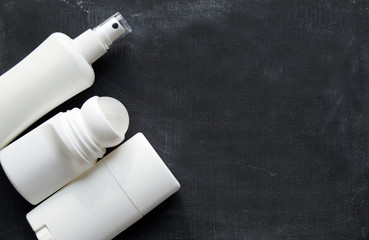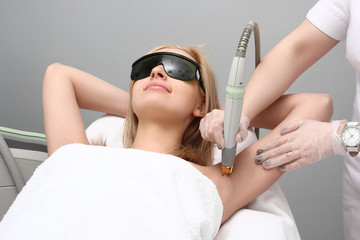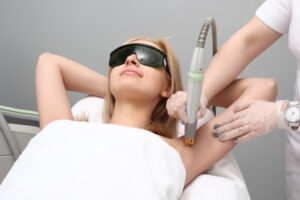You might have noticed the trend in beauty and personal hygiene products — brands are marketing their deodorants as aluminum-free. And it’s a great option if you want to avoid the aluminum that is linked to breast cancer and Alzheimer’s.
These natural and organic deodorants reduce body odor by using baking soda, charcoal, and other clean ingredients without blocking the flow of sweat. They also have no artificial fragrances and use no talc. Keep reading the article below to learn more about Aluminum Free Deodorant.
Many aluminum-free deodorants use natural ingredients to keep you smelling fresh. They may contain baking soda or other types of natural absorbents, such as arrowroot powder or cornstarch. They might also include essential oils, which add a pleasant scent to your underarms. Some brands use safe antibacterial ingredients to prevent body odor by targeting the bacteria that cause it, instead of trying to block or inhibit sweat like traditional deodorants do. These products are often free of preservatives that can disrupt the delicate skin microbiome and lead to health issues.
Sweat is a natural body function that helps us stay cool and remove toxins from our bodies. However, when this sweat comes into contact with our underarm hair and clothing, it can become a breeding ground for odor-causing bacteria. Aluminum in regular deodorants and antiperspirants blocks this natural process by preventing sweat from reaching your underarms, but it can be dangerous for those with sensitive skin.
Fortunately, advances in natural chemistry have led to the development of effective aluminum-free products that don’t block perspiration or interfere with your body’s ability to eliminate toxins naturally. In fact, these products can even be more effective than some antiperspirants, thanks to innovations in formulas that use natural ingredients to neutralize odor and keep you feeling fresh.
When you first start using an aluminum-free deodorant, it’s important to know that your body will need time to adjust. This can take anywhere from a few days to a few weeks, depending on your individual body chemistry and activity level. To ease the transition, try applying your new product during a cooler season and/or after you’ve had a shower. Also, make sure to wash your pits with a natural soap before applying.
If you’re experiencing redness, itching or other irritation under your arms, stop using the product and see if the problem goes away. It’s likely caused by an ingredient that your body isn’t used to and could be an allergic reaction. Some common allergens found in regular deodorants that you might want to avoid when switching to aluminum-free include fragrance, talc, alcohol, BHT, mineral oil and baking soda.
Precautions
If you’re used to a conventional antiperspirant, you may experience some initial changes when switching over to an aluminum free deodorant. During this transition period, it’s normal to sweat more than usual and your underarm odor will also change. This process usually lasts a few weeks and isn’t a cause for alarm.
One thing to keep in mind is that many clean beauty brands use natural starches in their formulas to offer a soft and dry feel, instead of baking soda or talc. These ingredients don’t leave white marks on your clothes and are less likely to irritate sensitive underarm skin. Additionally, some clean beauty products have been specially designed to be absorbed without leaving any residue on the skin.
Another consideration is pregnancy. If you’re expecting, you should avoid all forms of antiperspirant and stick with a natural deodorant that’s safe for your unborn baby. This is because the chemicals that are used in most antiperspirants can enter your bloodstream and reach your baby, causing harm. It’s best to make the switch before you become pregnant, so you can get your body and underarms adjusted before you begin using a new deodorant again.
When choosing an aluminum-free deodorant, look for products that include minimal ingredients and are free of talc, alcohol, BHT, baking soda, mineral oil, phthalates and other common allergens. It’s also a good idea to choose a product that’s free of artificial fragrances, as these can trigger reactions in some people. If you do experience redness, itching or rashes on your armpits after using an aluminum-free deodorant, it’s important to stop using the product and speak with your doctor right away. They can determine the cause of your rash and recommend some alternatives. You can also try wearing more breathable fabrics, such as cotton and bamboo, which are naturally softer on your underarms than synthetic blends. This can help reduce the irritation and prevent a rash from occurring. In addition, a daily exfoliation routine will help minimize odor-causing bacteria and prevent underarm stains from forming. This will also ensure that your shirts stay fresh and clean for longer.
Side Effects
If you’re looking to avoid aluminum in your deodorant, there are plenty of options on the market. However, you should be aware that these products may not be as effective at eliminating odor and blocking sweat as your old standby. This is because they don’t block sweat ducts like antiperspirants do; they simply mask and neutralize body odor with fresh-smelling ingredients.
Many aluminum-free deodorants use baking soda or natural mineral powders to eliminate odor by killing the bacteria that create it. They also often include other ingredients such as shea butter and essential oils that have a pleasant scent and can leave you feeling fresh and clean all day long. Many of these products are free of animal testing and are vegan-friendly, making them a great option for people with sensitive skin or those who are allergic to synthetic fragrances.
Most aluminum-free deodorants are safe for people with normal kidney function, but they’re not suitable for those with weakened or impaired renal function. These individuals are at higher risk of having excess aluminum in their bloodstream due to their decreased ability to filter it out, which can lead to a condition called osteomalacia that causes weakening of the bones. This condition is rare, but it’s important to discuss any concerns you have with your doctor.
While there are a few potential health risks associated with using aluminum-free deodorants, most experts agree that they’re a safe alternative to conventional deodorants. The main concern is that high levels of aluminum can be absorbed through the skin, where it can cause irritation and potentially disrupt the delicate ecosystem of microorganisms that live on the surface of your body.
There are also concerns that aluminum can increase your risk of developing Alzheimer’s disease or breast cancer, though these claims have been largely dismissed by the scientific community. If you’re concerned about these issues, there are other ways to reduce your exposure to toxic chemicals, such as choosing green cleaning products and opting for organic food.
Some people report being extra sweaty for the first few weeks of switching to an aluminum-free product, but this usually stops once your body adjusts to the change. In addition, some people find that re-applying their deodorant throughout the day helps to keep them feeling and smelling fresh.
Bottom Line
When you make the switch to aluminum free deodorant, it’s important to remember that your body needs a bit of time to adjust to life without aluminum-blocking antiperspirant. You may sweat a little more in the beginning as your body purges the toxins from the old antiperspirant, but once it’s done, you should find that you have much less stink than before! It helps to stay hydrated in the meantime, as it can help your body get rid of those extra smelly sweat and bacteria.
You should also know that natural, aluminum-free deodorant doesn’t contain any of the nasty chemicals found in many pharma-deodorants. Instead, it contains ingredients like baking soda, vegetable glycerin, cornstarch and essential oils, all of which are good for your skin. It’s also completely vegan-friendly, which means it’s never been tested on animals! Many large, corporate antiperspirants do test on animals, so avoiding them is a great way to help protect the environment and other animals.
It’s worth mentioning that some people with kidney disease should not use any antiperspirants, as excess aluminum can be difficult for the kidneys to filter out of the body. However, it’s important to talk with your doctor about this before making a decision.
Another thing to keep in mind is that the odor-fighting compounds in natural deodorants are often plant-based, so if you have sensitive skin, it’s best to choose a mild option. If you do notice any redness, itching or rashes, that’s a sign of an allergic reaction to an ingredient in the product, so be sure to read the label and find a better option. Aluminum-free deodorants are gaining popularity because they focus on odor control without interfering with your body’s natural process. They’re a great alternative to the harsh antiperspirants that are often linked to breast cancer, Alzheimer’s and other health issues. Aluminum free deodorant is available in most specialty stores and online, as well as in regular grocery stores alongside organic and other natural products. They’re also becoming more widely available in drugstores and big box stores, reflecting a growing emphasis on not only effectiveness but long-term health implications of personal care products.


